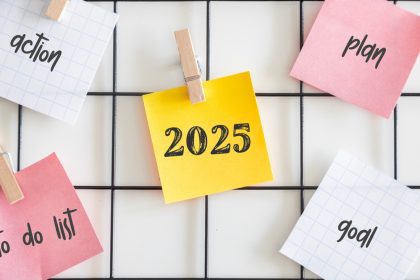The concept of meeting your own emotional needs might seem counterintuitive in a culture that often emphasizes relationships as the primary source of emotional fulfillment. Yet developing the ability to recognize and address your emotional requirements represents a crucial step toward authentic happiness and healthier connections with others. This foundational skill transforms not only your relationship with yourself but enhances every interaction in your life.
Why self-reliance matters for emotional wellness
Emotional self-reliance involves developing the capacity to identify, honor, and fulfill your core emotional needs rather than depending primarily on others for validation, security, and satisfaction. This approach doesn’t suggest emotional isolation but rather establishes a healthy balance between self-care and connection with others.
The journey toward emotional self-sufficiency begins with understanding why this skill proves so essential. When emotional fulfillment depends heavily on others, relationships transform from enriching connections into sources of anxiety and dependency. This imbalance places impossible burdens on partners, friends, and family members while creating vulnerability to manipulation and neglect.
Developing emotional self-reliance creates resilience during inevitable relationship changes and disappointments. While no human exists in complete isolation, those who cultivate internal resources navigate life transitions with greater stability. This capacity becomes particularly valuable during relationship endings, geographical relocations, or evolving social circumstances that disrupt established emotional support systems.
The ability to meet your own emotional needs also enhances rather than diminishes relationship quality. When two emotionally self-sufficient individuals choose connection, their relationship stands on mutual enrichment rather than desperation. This dynamic creates space for authentic giving without resentment and receiving without guilt—a foundation for sustained intimacy and mutual growth.
The 8 essential strategies for emotional self-care
Implementing specific practices helps transform the abstract concept of emotional self-reliance into concrete daily actions that gradually reshape your relationship with yourself.
- Develop emotional literacy through regular check-ins
Many people move through life with minimal awareness of their emotional states, noticing feelings only when they reach overwhelming intensity. Developing emotional literacy—the ability to identify and name emotions with nuance—provides the essential foundation for self-care.
Regular emotional check-ins create this awareness. Several times daily, particularly during transitions between activities, pause briefly to notice what emotions exist in your body. Rather than judging these feelings as good or bad, simply observe them with curiosity. Is there tension in your shoulders signaling anxiety? Heaviness in your chest indicating sadness? Fluttering in your stomach suggesting excitement?
Expanding your emotional vocabulary supports this process. Beyond basic labels like “happy” or “upset,” explore more precise descriptions like “apprehensive,” “tender,” “melancholy,” or “invigorated.” This specificity helps distinguish between similar-feeling emotions that might require different responses. The initial discomfort many experience with this practice typically eases with consistent application.
Journaling amplifies these benefits by creating a tangible record of emotional patterns over time. Even brief daily notes about emotional states help identify triggers, recurring themes, and gradual shifts that might otherwise remain invisible. This written practice creates valuable perspective on emotional experiences that often seem permanent in the moment but actually flow and change considerably.
- Honor your feelings without handing them control
Acknowledging emotions differs fundamentally from being controlled by them. Emotional self-care requires creating space for all feelings without judgment while maintaining agency over your responses. This balanced approach navigates between emotional suppression and impulsive reactivity.
The practice of emotional validation provides this middle path. When difficult feelings arise, acknowledge their presence with simple statements like “I notice I’m feeling anxious right now, and that’s natural” or “This disappointment makes sense given my expectations.” This internal dialogue creates acceptance without amplification, reducing the tendency for emotions to escalate through resistance.
Physical sensations provide valuable entry points for this approach. Rather than analyzing why you feel a certain way, simply notice where emotions manifest in your body without trying to change the sensations. This nonjudgmental awareness often naturally reduces emotional intensity while providing important information about what your body might need in response.
Boundaries around emotional processing help prevent rumination while still honoring feelings. Setting specific times for emotional exploration—perhaps through journaling, meditation, or scheduled reflection—creates containment that prevents feelings from dominating entire days. This structured approach acknowledges emotions while preserving energy for other life dimensions.
- Identify core emotional needs with specificity
While general concepts like “happiness” or “fulfillment” might motivate emotional growth, effective self-care requires identifying specific emotional needs with greater precision. These core needs vary considerably between individuals based on temperament, history, and circumstances.
Common emotional needs include security (feeling safe and stable), autonomy (having choices and control), connection (experiencing belonging and understanding), competence (developing mastery and recognition), and meaning (finding purpose and significance). While most humans share these general requirements, the specific expressions and priorities differ substantially.
Personal reflection helps identify your particular emotional needs configuration. Consider questions like: When have you felt most fulfilled and what specific elements created that experience? What emotional deficits trigger your strongest reactions? What qualities consistently appear in your most satisfying relationships and activities? These patterns reveal your unique emotional need profile.
Distinguishing between means and ends clarifies this exploration. For example, someone might initially identify “receiving compliments” as an emotional need, but deeper reflection might reveal the underlying need for recognition of their contributions or confirmation of belonging. This distinction helps develop more flexible and effective fulfillment strategies.
- Create personalized emotional nourishment practices
Once core emotional needs become clear, developing specific self-care practices tailored to those needs creates sustainable emotional nourishment. These individualized approaches prove far more effective than generic self-care recommendations.
For connection needs, practices might include cultivating a rich inner dialogue through journaling, developing relationships with artistic or literary works that resonate deeply, or establishing meaningful rituals that connect to personal values or spiritual beliefs. These approaches provide relational nourishment even during periods of social limitation.
Security needs might be addressed through creating environmental stability with consistent routines, establishing financial practices that enhance predictability, developing comfort with uncertainty through mindfulness practices, or creating physical spaces that evoke safety through sensory elements like soft textures or calming colors.
Competence needs can be nourished through setting challenging but achievable learning goals, documenting personal growth and achievements, developing expertise in areas of natural interest, or creating opportunities to use strengths in service to others, which often provides powerful affirmation of value.
Meaning needs might find fulfillment through clarifying personal values and increasing alignment between daily choices and these deeper principles, contributing to causes extending beyond self-interest, creating practices that connect to transcendent dimensions of experience, or crafting personal narratives that integrate difficult experiences into coherent purpose.
- Build healthy boundaries to protect emotional resources
Boundaries create the essential container for emotional self-care, protecting internal resources from depletion while clearly defining responsibilities in relationships. These limits require both internal consistency and clear external communication.
Time boundaries preserve emotional energy by creating realistic limits on commitments. This practice involves learning to pause before saying yes to requests, honestly assessing available capacity, and communicating limits respectfully but directly. The initial discomfort of setting time boundaries typically diminishes as the resulting emotional spaciousness becomes apparent.
Responsibility boundaries clarify appropriate ownership of emotions and problems. While empathy remains important, emotional self-reliance involves recognizing which feelings belong to you versus others. This distinction prevents absorbing others’ emotional states while maintaining compassionate connection, particularly important for naturally empathetic individuals.
Information boundaries control what inputs enter your emotional ecosystem. Curating media consumption, setting limits on discussion topics that consistently trigger distress without benefit, and temporarily distancing from chronically negative influences all help preserve emotional equilibrium while resources for self-regulation develop.
Expectation boundaries involve realistic assessments of what others can provide emotionally. This practice requires honest evaluation of relationship capacities rather than projecting idealized hopes onto others. Recognizing these limits creates space for appreciation of what each relationship genuinely offers while directing unfulfilled needs toward more appropriate sources.
- Develop self-soothing techniques for emotional regulation
The ability to calm and comfort yourself during emotional distress provides essential support for emotional independence. These self-soothing practices work most effectively when developed proactively rather than during intense emotional states.
Physical soothing techniques utilize the body’s natural calming mechanisms. Deep breathing patterns that extend exhales longer than inhales activate the parasympathetic nervous system, reducing stress hormones. Progressive muscle relaxation, alternately tensing and releasing muscle groups, releases physical tension that amplifies emotional distress. Temperature interventions like warm showers or cold compresses provide powerful sensory input that can interrupt escalating emotions.
Cognitive approaches offer complementary regulation strategies. Thought labeling—simply noting thoughts as they arise without attaching to them—creates distance from distressing mental patterns. Perspective expansion involves deliberately considering multiple viewpoints on situations rather than fixating on initial interpretations. Future self visualization imagines looking back on current difficulties from a future vantage point, highlighting their temporary nature.
Sensory comfort engages the five senses to create calming experiences. Curated playlists of music that evokes specific emotional states, comforting tactile objects like soft blankets or stress balls, calming visual inputs such as nature images or particular color schemes, soothing scents like lavender or vanilla, and specific tastes like herbal tea or dark chocolate can all provide immediate sensory pathways to regulation.
Creating personalized emergency emotional kits consolidates these tools for accessibility during difficult moments. Whether physical containers with sensory items and written reminders or digital collections of supportive resources, these prepared kits reduce the cognitive burden of remembering coping strategies when emotional flooding makes thinking difficult.
- Practice self-validation to reduce external approval seeking
The habit of seeking validation primarily from external sources creates vulnerability and instability. Developing internal validation capacity establishes a more reliable foundation for emotional security while enhancing authenticity in relationships.
Recognition of personal strengths builds this internal reference point. Deliberately documenting specific capabilities, positive qualities, and past successes creates evidence that counterbalances the human tendency toward negative focus. This inventory serves as a resource during periods of self-doubt, providing concrete reminders of personal capacity and resilience.
Developing comfort with personal decisions regardless of others’ opinions represents another crucial validation skill. This practice involves distinguishing between seeking input for informed choices versus seeking approval to feel acceptable. The latter creates dependency while the former maintains autonomy within connection.
Challenging internalized critical voices often proves essential for self-validation. Many people carry harsh internal dialogues absorbed from childhood experiences or cultural messaging. Identifying these voices as learned constructs rather than truth creates space to deliberately develop more balanced internal feedback systems.
Celebrating personal achievements, even small ones, reinforces internal validation pathways. Taking time to acknowledge efforts and progress, regardless of external recognition, gradually shifts the primary source of satisfaction from outside approval to internal acknowledgment. This practice feels uncomfortable or selfish for many initially but becomes more natural with consistent application.
- Build a diverse emotional support ecosystem
While emotional self-reliance reduces unhealthy dependency, meaningful connection remains essential for wellbeing. Creating a diverse support network rather than relying heavily on any single relationship provides both emotional enrichment and practical resilience.
Diversification across relationship types provides balanced emotional nourishment. Different connections naturally fulfill varying emotional needs—some offering practical support, others intellectual stimulation, others playful companionship, others deep understanding. Recognizing these natural variations reduces the tendency to expect any single relationship to meet all emotional requirements.
Reciprocity within relationships supports healthy independence. Balanced give-and-take creates sustainable connections where both participants receive genuine benefits. This mutuality differs from transactional scorekeeping, instead focusing on overall patterns of exchange that honor both individuals’ needs and contributions over time.
Community involvement expands support beyond individual relationships. Participation in groups organized around shared interests, values, or circumstances creates belonging within collective contexts. These communities often provide support during periods when close relationships experience limitations, creating additional resilience during life transitions.
Professional resources complement personal connections for complex emotional needs. Therapy, coaching, educational resources, and support groups offer specialized assistance for specific challenges while reducing pressure on personal relationships. Utilizing these resources demonstrates self-responsibility rather than weakness, often strengthening rather than diminishing authentic connection with others.
Common obstacles and how to overcome them
Several predictable challenges emerge when developing emotional self-reliance. Understanding these common obstacles helps prepare for and navigate through potential difficulties.
Cultural conditioning powerfully influences emotional patterns, particularly around gender expectations. Many women receive explicit and implicit messages prioritizing others’ needs above their own, while many men learn to suppress emotional awareness entirely. Recognizing these cultural patterns as learned rather than inherent creates space for consciously choosing different approaches despite initial discomfort.
Past relationship patterns create momentum toward familiar emotional dynamics even when they prove unhealthy. The pull toward recreating these patterns, even unconsciously, requires patience and persistence to overcome. Small, consistent steps toward new emotional habits gradually weaken these established pathways while strengthening healthier alternatives.
Fear of selfishness often emerges when prioritizing emotional self-care, particularly for those raised with messages equating self-nurture with narcissism. This concern reflects confusion between self-absorption and self-respect. Genuine emotional self-care enhances capacity for meaningful contribution to others rather than diminishing it, creating sustainability rather than depletion in relationships and activities.
Emotional overwhelm can temporarily derail self-care practices, particularly during significant stress or life transitions. Having predetermined “minimum viable” versions of practices helps maintain consistency during challenging periods. These simplified approaches maintain core benefits while requiring less energy, bridging difficult times without complete abandonment of self-care.
Progress inconsistency proves universal in emotional development, with advances typically following nonlinear patterns including plateaus and occasional backsliding. Understanding this natural variation helps maintain perspective during apparent setbacks. Viewing emotional growth as developing mastery through practice rather than achieving permanent transformation reduces discouragement during inevitable fluctuations.
Signs of progress on the emotional self-reliance journey
Recognizing indicators of development provides motivation and guidance on the path toward emotional self-sufficiency. Several specific shifts typically emerge as self-care practices gain traction.
Reduced emotional reactivity appears as one of the earliest signs of progress. The gap between experiencing feelings and acting on them gradually widens, creating space for choice rather than automatic responses. This change often becomes noticeable first in minor irritations before extending to more significant triggers.
Relationship dynamic shifts naturally follow increased emotional self-reliance. As dependency decreases, connections become choices rather than necessities, often leading to more authentic interactions. Many people report that others respond differently to them as their own emotional patterns change, even without explicit discussion of these shifts.
Intuitive decision-making typically strengthens with emotional self-sufficiency. As external validation becomes less crucial, internal wisdom speaks more clearly without interference from approval-seeking. This guidance system provides increasingly reliable navigation for choices aligned with authentic needs and values.
Increased comfort with a wider emotional range develops through consistent self-validation. Feelings previously judged as unacceptable or overwhelming become more manageable and informative when met with acceptance rather than resistance. This expanded capacity creates greater emotional flexibility and resilience across various situations.
Greater life satisfaction emerges as perhaps the most significant indicator of progress. When emotional needs receive consistent attention and care, the constant background hunger for fulfillment diminishes. This reduction in emotional static creates space for deeper engagement with chosen activities and relationships, enhancing overall life quality beyond specific emotional states.
The lifelong practice of emotional self-nourishment
Emotional self-reliance represents an ongoing journey rather than a destination. Understanding its evolving nature helps establish sustainable expectations and approaches.
Seasonal variations in emotional needs require flexible adaptation of practices. Just as physical needs change with circumstances, emotional requirements shift with life seasons. Periods of transition typically demand different support than times of stability, while achievement phases often require different nourishment than consolidation phases. Recognizing these natural variations helps maintain effectiveness through changing circumstances.
Periodic reassessment of emotional patterns provides valuable course correction on this journey. Regular reflection on what practices continue serving well versus which might need adjustment prevents stagnation in approaches that may have outgrown their usefulness. This ongoing evaluation maintains alignment between evolving needs and self-care strategies.
Integration with relationships enhances rather than diminishes emotional self-reliance benefits. As internal resources develop, sharing this growth with trusted others creates mutual enrichment rather than dependency. This integration allows vulnerability to become a conscious choice made from strength rather than a desperate need arising from deficiency.
Compassion for the ongoing process remains perhaps the most essential element for sustainable emotional self-care. The journey toward emotional self-sufficiency inevitably includes imperfect implementation, temporary setbacks, and periods of struggle. Meeting these challenges with the same kindness extended to a valued friend creates resilience that transforms obstacles into opportunities for deeper understanding and growth.
The capacity to meet your own emotional needs ultimately creates not isolation but liberation—freedom to engage with life and relationships from wholeness rather than hunger. This foundation supports authenticity, resilience, and deeper connection with both self and others, enriching every dimension of human experience.















